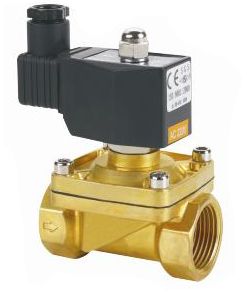There are so many references that I am not going to pick one over the other so you can nitpick some other detail. The references are broad.
If you won't provide one, that's fine. If your basis for not doing so, and it appears to be, is that it might not support your position, that's fine too. Just maybe interesting.
Yes. You have presented those ideas, and I have countered them.
You have stated your opinion without any giving any technical basis for it.
What you haven't done is found a way to dismiss my counter statements.
What you haven't done is to provide a jot of support for your opinion.
I am open to discuss the topic in a civil maner, but if you are at the point of doing nothing more than sniping, then I am done. If you can't argue the points on their merits, then there is no point in pretending that this is a discussion any more.
I will respond to valid argument points made, but this will be my last comment on sniping comments. Post something with content, or I will not respond.
I'm also open to discuss it in a civil manner.
I've given reasons why I think the inclusion of a series diode would be a bad idea. Normally I would support my points with actual experience but I have had not a lot to do with solenoids - not that I have seen any reference other than your own that the coil in the opening post is actually a solenoid. What I can tell you is that if you try to switch a relay coil (or any other coil for that matter*) in a DC circuit without come quenching device across it like a flywheel diode there is a distinct probability that you will damage the switching element. You will no doubt be aware that IGBTs in variable frequency inverters have inverse parallel diodes. You can't just switch off the current in a coil.
Here's an actual circuit of ours to illustrate what I mean:
So, let's assume that we go with your idea of puting a series diode in the circuit and take the precautionary measure of fitting a flywheel diode across the coil. What will happen?
In the first half cycle the current will be at a certain value >0A. This current will then flow for a while in the flywheel diode and, given the relatively low forward drop on the diode, may still be flowing at the start of the next positive half cycle. So more current is established.....etc.
Without the flywheel diode, the current in the first positive half cycle will continue, as it must, into the negative half so the coil will see part of the negative voltage as well. How much will depend on the coil characteristics.
Mivey kindly provided a link to an article on solenoid operation and directed attention to operation of an AC solenoid on DC. On AC there is an initial inrush that gives pulling power while the closed holding current is much lower. This can be emulated on DC by having a series resistor switched in after closing.
From page 7 where Mivey directed us:
In many cases, AC solenoids can be operated on DC power with the addition of a switch and resistor. The switch is arranged to be opened when the solenoid closes. When the switch opens the resistor is in series with the solenoid coil. The addition of this resistance reduces the coil current so the solenoid can be held energized without burning out. A high current which will produce a high pull-in force is then possible.
This exactly the circuit that was commonly used on old DC switchgear where contactor coils were DC. The series resistor was called an economy resistor. And just a tad more sophisticated than a series diode.
*Other coils and DC.
A few years ago, well, actually several decades ago, we'd made some upgrades to a DC drive system that first saw the light of day in 1935 or thereabouts. The speed reference was a frequency from a master alternator driven by the DC master motor. It wasn't very big, maybe about 5kW and 310Vdc. This DC motor was started by shorting out a series of resistors in sequence with a final contactor shorting out the lot. Thus the intermediate contactors had only to make current, not break it and, as was the practice, were not DC rated. One not so fine day, the electrician working with me made some modifications but didn't explain them very well - this was in the far east so there were some language constraints. The long and the short is that one of the intermediate contactors tried to break the DC. It did so - eventually. When the molten contact material dripped out the bottom.


